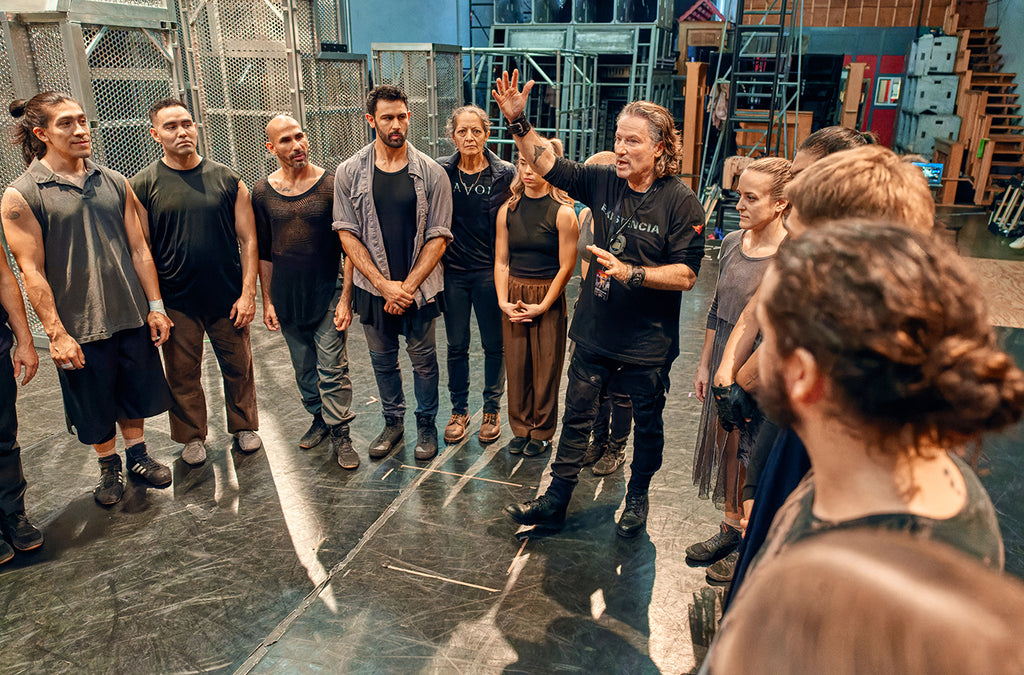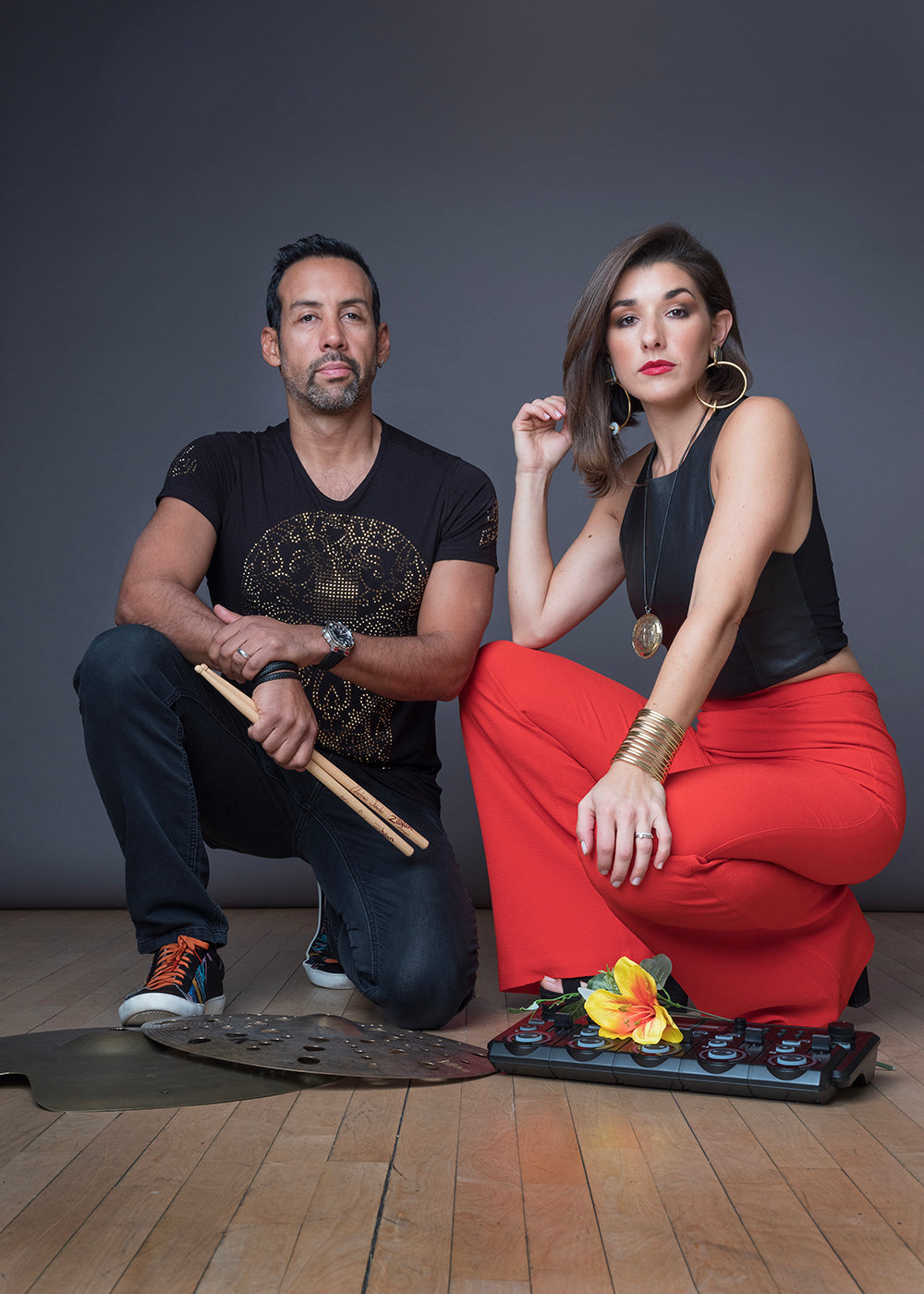As part of the rescue, the script calls for 60-year old Amelia Rudolph, who stepped down from Bandaloop in 2020 and is the troupe’s director of special projects, to do an aerial solo. It was Jim Vincent who thought of adding aerial to “Existencia,” explaining: “After the shock and suspension, after a major crisis, we wonder, “What happens to time?”
“The way our minds seduce and stretch time and distort reality in front of us,” he continued, “how can we physically represent that? How would we defy gravity? I began to consider aerial and said, ‘I think I have somebody.’”
That somebody was Rudolph, and though she wasn’t in the studio the afternoon I visited, the artist spoke by phone about her solo.
“I don’t want to give away too much, but, generally, what happens is they pull my character out of the rubble. I would say I represent the appreciation of life that I have at this moment of just being barely alive, this whole beginning, when I’m crawling around, half-conscious, droopy, hardly there.
“And then I realize I’m alive, and I feel gratitude through my body,” Rudolph continued. “And through movement, I celebrate that gratitude. It moves from very subtle and hardly aliveness into a real celebration of life.”
Celebrating life is also core to “Existencia.” But from Fitzcarraldo-like determination and absolute belief in his ambitious vision, Heim is pulling no punches. On my next visit, the troupe is rehearsing “The Fall,” where the sound of collapsing buildings, car alarms, sirens, helicopters, news excerpts and screaming voices—“Ayudame!”—are heard.
And the reason I am given ear plugs!
Simon Greenberg is the video, sound effects and graphic designer, Luke Dennis is the audio engineer, and Jean-Yves Tessier is credited with the lighting design. Costumer David Tauster is on hand this day, his non-gender specific wardrobe hanging on a rack in earth tones, muted grays and blacks.
Having covered Diavolo for nearly three decades, it’s safe to say I would know what to expect from the company that, among so many memorable performances, was also a 2017 finalist on the network TV show, America’s Got Talent. But this scene, which could also be dubbed, “Dancing with Towers”—features the “props” crashing down in quick succession, making the scare factor of “The Exorcist” seem tame by comparison.
Heim, again on megaphone: “There is going to be so much fucking noise. By now,” he adds, “you should know where you are. And you need to know where everyone is at every moment.
“Remember,” he says to Mia Moraru, “it’s not a flight, it’s a fall.”
Talk about operatic: As she plunges off of the remaining upright tower, I’m reminded of the final scene of “Tosca.” But instead of the heroine plummeting from a parapet to her death, Moraru leaps into the sturdy arms of six dancers.
Heim, in a full-throated sports announcer voice, proclaims: “She falls . . . and she lands!”
The rehearsal, to say the least, has been intense, with the dancers now bouncing from one spot on the floor to another as they weave around the surreal aluminum landscape.
Calling for a lunch break, Heim and team convene in the office, where Vincent says, “There’s something incredibly disturbing about this piece, but in all the right ways,” which, in a profoundly visceral sense, is absolutely true.













comments